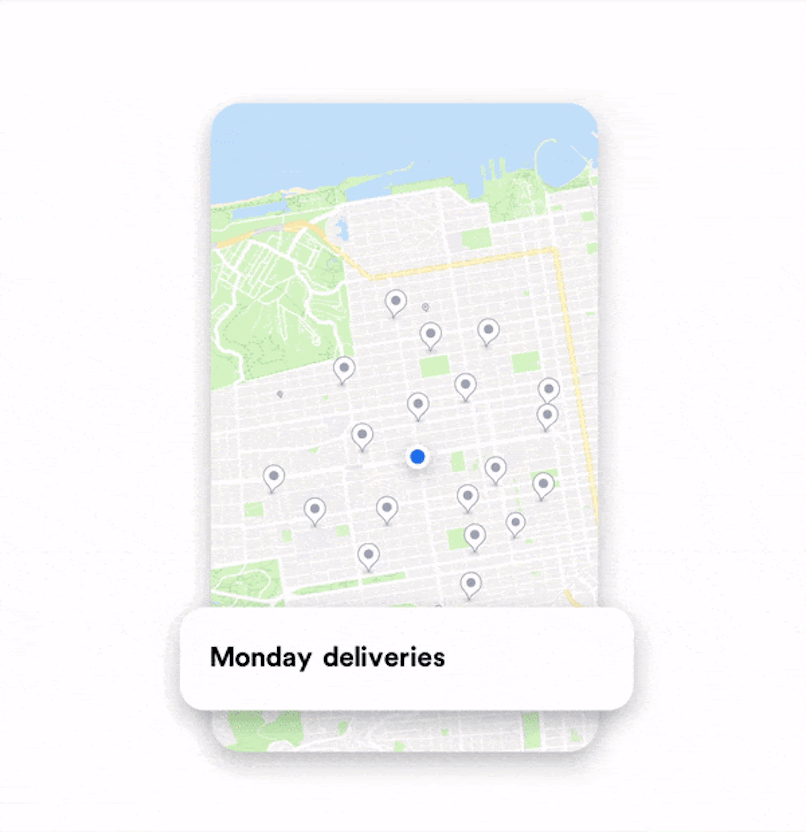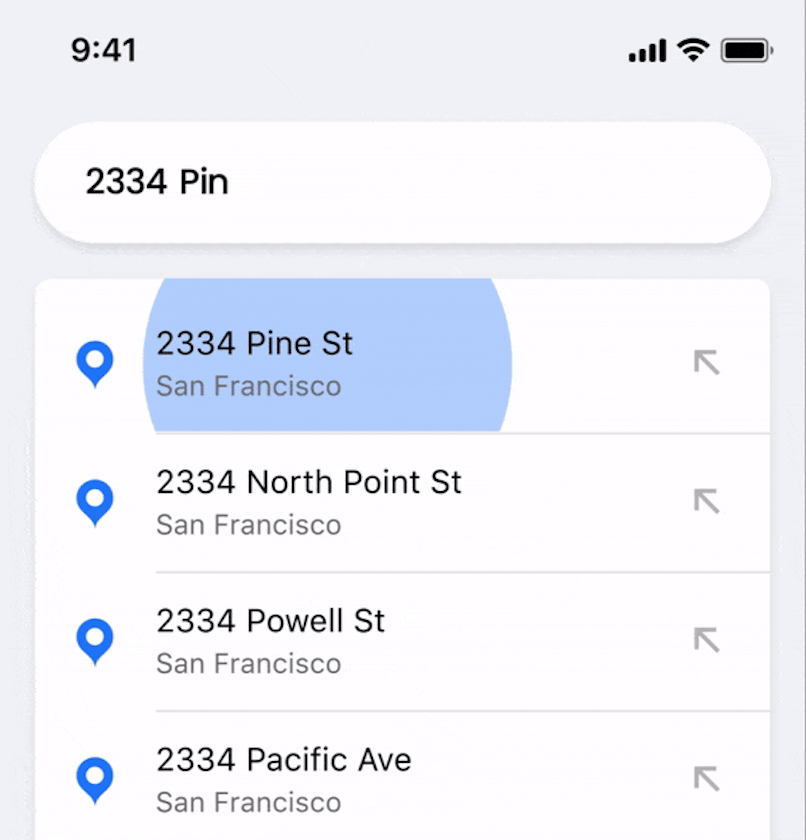The Best Routing Software for Delivery Businesses
If you’re going to pick a route mapping/monitoring software, it makes sense to pick something with key tools that both dispatchers and drivers enjoy using.

Circuit began as a general-purpose route optimization software to help anyone who needed an efficient way to drive (or bike) to multiple stops. But we quickly realized our most enthusiastic users were delivery drivers. Over the past three years, we dove into what these drivers needed and wanted, then built out functionality that helps the whole team work more quickly and efficiently.
From the beginning, our focus has been on usability: building a tool that will be an awesome experience for both drivers and dispatchers. While other folks can use and enjoy Circuit, the product will grow to be more and more tailored to delivery work (as opposed to, say, field service or sales routes).
If you’re going to pick software to keep everyone on the same page, we think it makes sense to pick something that gets the job done and something that dispatchers and drivers actually like to use. So here’s a look at what we’re doing for each member of your delivery team.
If you manage a team of drivers and want a simple, cost-effective way to keep track of them (while making their routes more efficient), sign up for a free trial of Circuit.
Features Designed for Delivery Dispatchers
Route mapping software makes delivery drivers’ lives easier, but the information we use to keep drivers happy can also be used to make dispatching easier. We wanted Circuit to meet two primary needs:
- Let dispatchers choose how to distribute stops to their drivers (thereby increasing efficiency and reducing the number of trucks needed for delivery)
- Show dispatchers where their drivers are, and have been, within the context of the day’s route.
Fleet Level Route Optimization
Many of the dispatchers we’ve heard from still hand out deliveries based on zip code. The argument is that, if a driver does the same area consistently, then he or she will learn the “tough” stops and do a faster, better job over time.

The downside is that packages are not always distributed in the best way. You might have one driver who gets a 5-hour route and another who gets a 12-hour route on the same day. You’re not getting your money’s worth out of the first driver, and the second is going to be exhausted.
Here’s our recommendation for fleet management: Take all the deliveries that need to be made for the day and import them to Circuit using a CSV file. Circuit then automatically creates optimized routes to ensure that drivers are:
- Getting roughly equal work
- Able to make those deliveries in the most efficient way possible.
When you’re happy with the generated routes, you can send them to your drivers’ mobile devices.
What if drivers end up doing areas that are new to them? For most drivers using Circuit, it’s not a big problem. Drivers have told us that when they’re trying a new route using Circuit, they’ve been able to post completion times comparable to the previous, seasoned drivers — on their very first day.
Route Progress Monitoring (A Step Above Driver Tracking)
Many GPS tracking solutions will tell you where a truck is, but not many will tell you where a driver is in the context of their route (where they’ve been and where they’re going).
Using Circuit’s dispatcher web app, you can get real-time updates on where a driver is along their daily route (via a map that’s updated with live information). You can also zoom in on a specific driver and expand their list of upcoming stops. We’re also exploring functionality that allows dispatchers to drag and drop stops (currently, drivers can add stops and reoptimize their routes in the field, but dispatchers cannot do it for them).

ETAs are automatically updated throughout the day. They take into account average delivery time plus drive time. The ETA for the next stop is generally very accurate; if you have a 10-minute drive to the next stop, for example, then you can expect arrival within one or two minutes of the projected time.
The ETA for the final stop of the day grows more accurate the further in the route the driver is. For example, the ETA for the last stop should be within +/-1.5 hrs for a 10-hour route. It’s subject to uncertainty (traffic conditions and so forth), but it’s also only as good as the information you give it:
The ETAs rely on an average delivery time reported by the driver or the dispatcher. Plus, B2B deliveries can have a lot more variability than B2C (depending on industry, of course). If you need precise estimates, you’ll want to update the app with average times based on each type of stop.
Features Designed for Delivery Teams
Many of our features are designed to make it easier for delivery drivers to do their jobs well. And on-time drivers make for happy customers.
Route Planning on the Go
Most route-planning software options have dispatchers run the route in the morning and send it to drivers in a non-editable format. So if something goes wrong, drivers no longer have an optimal route available to them.
We’ve seen many reasons for drivers to reoptimize their delivery routes, such as:
- When a customer cancels their scheduled delivery time
- When a new pickup is added to the route
- When drivers are running late and need to make a detour to deliver a package during the planned time window
- When there is a change in traffic conditions (accidents, school traffic surge, etc.).
So if something like that comes up, drivers can update Circuit with their last delivery and run the algorithm again. They’ll receive a new best route for their updated circumstances.
In the near future, we hope to offer pro-active alerts when drivers are in danger of missing a time-sensitive delivery so that they can course-correct.
Google Maps Autocomplete and Address Nicknames
If you add addresses to Circuit by hand, every second counts. That’s why we’re using Google’s address autocomplete service. Unlike other services, it uses contextual information to suggest the remainder of the address you’re typing. Even though this capability costs us 10x more to offer than the other solutions on the market, we believe the improved user experience for drivers is worth it.
Why? We’ve seen drivers say that alternative autocomplete services (like Mapbox) are “terrible,” “take twice as long,” and “unusable.” Because of that, powering Circuit with Google Maps Autocomplete was the obvious choice for us.

Note: If you have addresses in a CSV file, you can load the whole day’s worth of stops in one go. It’s faster than adding them by hand.
In addition, we added the ability to keep your location nicknames intact. Let’s say you added “The Grove” as a stop on your route. Even though you typed in the business name, Google would normally display the stop on your list as “690 Mission St, San Francisco, CA 94105.” Drivers who don’t recognize the address have to stop and cross-check it with their manifest. To avoid that extra step, we’ve adjusted the service so the name you type in (and recognize) will be the same thing you see on your route planner.
Compatibility with Popular Navigation Apps
Circuit is compatible with all common navigation apps, like Google Maps and Waze. Drivers can toggle between the two to mark their stops as complete, then begin driving to the next stop.
Something we noticed quickly after building Circuit was that some smartphones couldn’t handle keeping both Circuit and a navigation mobile app open at the same time. So we developed a “chat head” for Android phones (not possible for iPhone users; sorry, all).
It’s exactly like using the Facebook messenger chat head and allows you to toggle between each needed program faster, and without worrying that the applications will crash.
Recent Improvements
We’re always researching, planning, and testing improvements to Circuit. Some of the features we’ve recently rolled out include:
- An integration available to the package recipient (so they know expected arrival time, delivery confirmation, etc.)
- The ability to account for package size and vehicle type when you’re ready to plan routes and load parcels
- Advanced functionality for drivers who need to plan package drop-offs before package pick-ups later in the route
In the future, we plan to add universal note taking (so drivers can take notes on hard-to-find addresses and share those notes with other drivers).
Is Route Mapping Software Worth It?
Sometimes, drivers argue that the 15 (or so) minutes needed to add addresses to a route manager in the morning isn’t worth it and that they’ll make up for it by intuitively driving to the closest stops. In reality, we’ve seen that drivers who use Circuit often finish their routes 15-20% earlier each day.
And that’s just the route planning solution. Dispatchers benefit from knowing where their drivers are and when they’ll get to the next stop. If customers call to ask for their delivery status, they don’t have to then call the driver and further delay their progress.
It’s easier to plan efficient routes for everyone on the team. And there’s something to be said for getting everyone on the same, repeatable process. For anyone hoping to scale delivery operations, that consistency (and improved ability to plan for the future) is invaluable.
We’re not here to tell you that Circuit is a flawless solution to all your delivery headaches. But we are working hard to provide a single platform for dispatchers and drivers to work more efficiently, drive higher customer satisfaction, and get home earlier in the day.
If you have a delivery service and want a simple, cost-effective way to keep the team on track, sign up for a free trial of Circuit.

